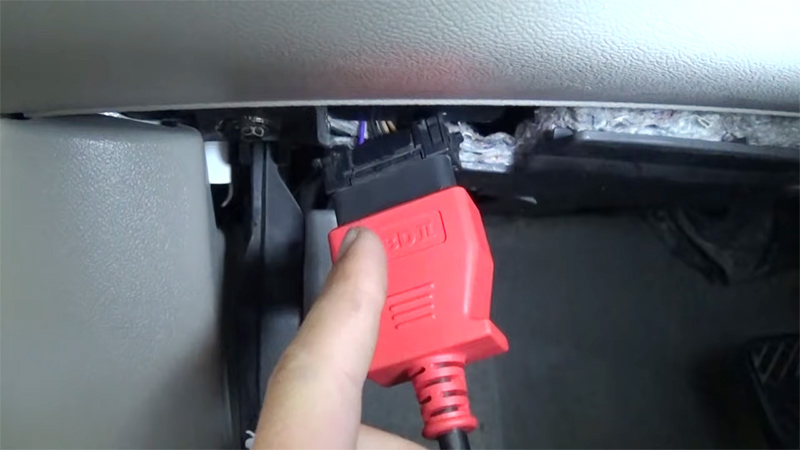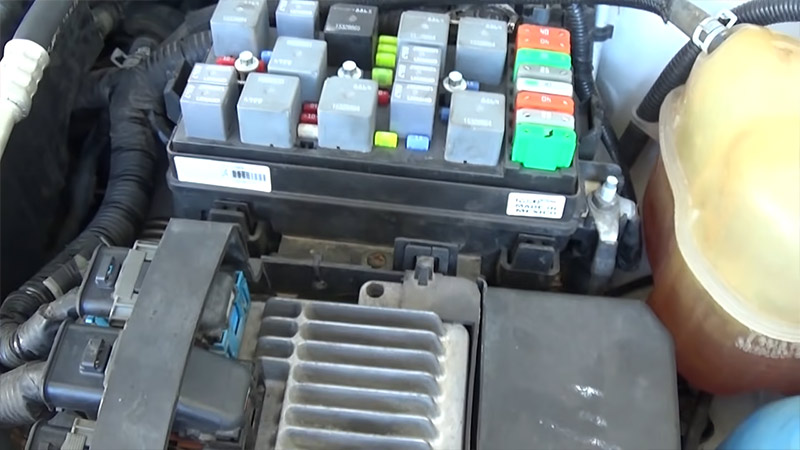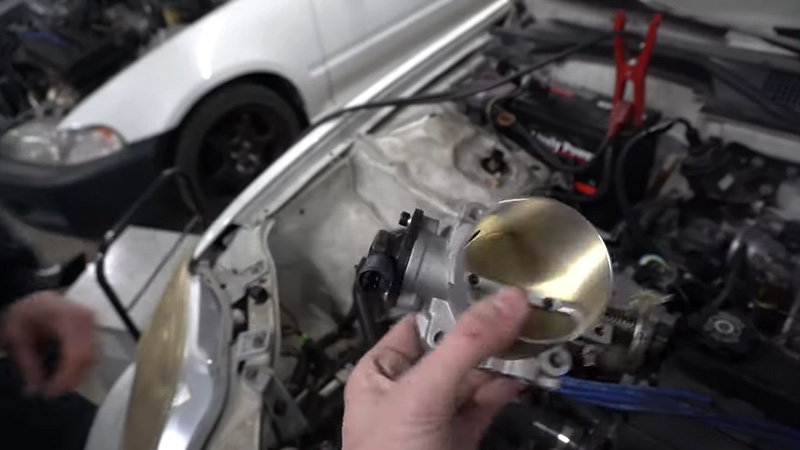If you’re a Honda owner experiencing issues with your car’s acceleration or idling, a faulty throttle position sensor (TPS) could be the culprit.
The TPS plays a crucial role in regulating the amount of air and fuel that enters the engine. When it malfunctions, it can lead to a host of problems.
Fortunately, resetting the TPS is a straightforward process that you can do at home with just a few basic tools.
In this guide, we’ll take you step-by-step through the process of resetting the throttle position sensor on your Honda, so you can drive with confidence and power.
Honda Throttle Position Sensor Overview
The throttle position sensor plays a crucial role in maintaining your Honda engine’s proper functioning. It is responsible for regulating the acceleration and combustion of the engine and helps to ensure smooth and efficient operation.
In most cases, the throttle position sensor is located on the side of the throttle body. This is the metal piece that connects to the intake manifold. However, the location of the sensor may vary depending on your Honda model and trim.
Older Honda vehicles usually have a mechanical throttle position sensor, typically found on the side of the throttle body.
On the other hand, newer Honda vehicles are equipped with an electronic throttle position sensor, which is situated on the top of the throttle body. Regardless of the type of sensor, its function remains the same.

How To Reset The Throttle Position Sensor On Honda? [Battery Removal Method]
In Honda cars, a throttle position sensor informs the computer about the accelerator pedal depression level. If this sensor is not correctly adjusted, it can affect idling and power delivery.
If you’ve replaced the battery, cleaned the engine, or performed any work on the throttle body assembly, you may need to reset the throttle position sensor in your Honda.
To do so, disconnect the battery for 15-30 minutes to reset the ECU. Upon restarting the engine, the TPS should reset and operate correctly. If this doesn’t work, you can use an OBD2 scanner’s TPS reset function.
The Throttle Position Sensor (TPS) is located on the throttle body and sends signals to the engine control module (ECM), instructing it on how much fuel to inject into the cylinders.
A malfunctioning TPS can result in the engine running too lean or too rich. Honda’s process is a bit different.

What Is The Honda Throttle Body Reset Procedure? [Manual]
There are two methods to reset the throttle body on a Honda. The first one involves using a scan tool, which is the preferred option by most experts, dealerships, and mechanics. However, if you don’t have access to a scan tool, don’t worry.
You can still reset the throttle body on your Honda by following these simple steps:
- Firstly, insert your key and turn the ignition to the RUN position for three seconds.
- Secondly, start the car and rev it up to around 3,000 RPM to trigger the radiator fans.
- Once the fans come on, turn off all accessories and let the car idle for a few minutes.
- Finally, turn off the car, and you should have successfully reset the throttle body on your Honda.
Resetting The Throttle Position Sensor In A Honda Using An OBD2 Scanner
Resetting the throttle position sensor in a Honda is a quick and easy process that can be completed in less than two minutes using an OBD2 scanner, also known as a code reader. Here are the steps to follow:
- Connect your scanner to the OBD2 port located beneath the dashboard of your Honda.
- Use the scanner’s buttons to navigate to the “TP POSITION CHECK” menu.
- Reset the TP value.
- Once you have reset the TP value, select the “RELEARN PROCESS” option.
And just like that, you have successfully reset the throttle position sensor in your Honda.

What Causes Throttle Position Sensor Failure?
Given the crucial role of the throttle position sensor, it is important to understand why the TPS may malfunction.
One of the primary reasons for TPS failure is due to a loose connection, which can occur due to corrosion or a poorly fitted connection.
Another possible cause is the accumulation of carbon deposits on the sensor, which can occur over time and eventually lead to sensor failure.
Additionally, physical damage to the sensor, such as being hit or sustaining other types of physical damage, can also cause TPS failure.
It is important to keep the throttle position sensor in good condition by performing regular maintenance. In addition, it is important to ensure that all connections are secure and free of corrosion.
If you suspect a TPS problem, it is recommended to have it diagnosed and replaced by a qualified mechanic.

Honda Throttle Position Sensor Symptoms
With a few tools, you can reset the throttle position sensor at home. Resetting the throttle position sensor can be necessary for several reasons. Below are some:
Gas Pedal Response Is Poor
The throttle body, which regulates the amount of air that enters the engine, is connected to the gas pedal and controlled by the throttle position sensor.
If you are experiencing issues with the gas pedal responsiveness, it may be due to a need to reset the sensor.
This is because the throttle position sensor plays a crucial role in determining the amount of air that enters the engine. This in turn affects the amount of power produced.
No start on Honda
If your Honda is not starting, it could be due to a malfunction in the throttle position sensor or its wiring. In such cases, resetting the throttle position sensor could be a possible solution, after ruling out other potential causes of the issue.
It is recommended to check the battery, ignition switch, and fuel filter first to ensure they are not the reason for the no-start condition.
If all other possibilities have been explored and ruled out, resetting the throttle position sensor could help rectify the issue and get your Honda up and running again.
Engine Light On?
When the check engine light illuminates in your Honda, it could be due to a variety of reasons. One of the possible causes is the need to reset the throttle position sensor.
This is because the check engine light is linked to the vehicle’s computer, which continuously monitors all sensors in your Honda.
If the computer detects an issue with any of the sensors, including the throttle position sensor, it may trigger the check engine light to turn on.
Therefore, resetting the throttle position sensor could help to address the issue and turn off the check engine light. However, it is recommended to have the vehicle diagnosed by a qualified mechanic to pinpoint the exact cause of the problem.
What Is The Function Of The Throttle Plate On A Honda?
The sensor determines the throttle plate position. The throttle position sensor tells the computer to open the throttle plate when you press down on the accelerator pedal.
This, in turn, allows more air to enter the engine, resulting in an increase in power output.
Conversely, when you release the accelerator pedal, the throttle position sensor sends a signal to the computer to close the throttle plate. This reduces power output and improves engine efficiency.
What Happens If You Disconnect Throttle Position Sensor?
When the throttle position sensor is disconnected, the PCM will not have access to crucial information when setting the air-fuel mix. There may be several issues if you disconnect the Throttle Position Sensor:
- Poor fuel efficiency
- Loss of power
- Poor engine performance
- Diagnostic trouble codes
- Check Engine Light
There are several possible engine performance issues and potential damage that can result from disconnecting the Throttle Position Sensor. A professional mechanic should be consulted if you suspect your TPS is malfunctioning.
What Is The Best Way To Test The Throttle Position Sensor?
If you suspect that the throttle position sensor in your vehicle is malfunctioning, there are a couple of ways to test it for proper functioning.
One way is to utilize a multimeter to test the sensor’s resistance, while another approach is to use a scan tool to check for error codes.
It is crucial to have your throttle position sensor diagnosed and fixed as soon as possible when you suspect it is not functioning correctly. Operating your vehicle with a defective throttle position sensor can cause engine damage.
What Is The Best Way To Clean My Throttle Body?
To clean your vehicle’s throttle body, you can do it at home using a few essential tools. Follow these steps:
Start by disconnecting the negative battery terminal and removing the bolts that hold the throttle body in place. This will remove it from the vehicle. Once removed, use a carburetor cleaner to clean the throttle body thoroughly.
After removing the throttle body from the vehicle, the next step is to clean it using a carburetor cleaner. Make sure that the cleaner is thoroughly sprayed throughout the throttle body’s nooks and crannies.
Once the cleaning is complete, reinstall the throttle body back in its original position and reconnect the negative battery terminal.
It’s vital to reset the throttle position sensor by disconnecting the negative battery terminal and removing the bolts holding the sensor in place. Once done, reconnect the negative battery terminal to complete the process.
How Often Should I Clean My Throttle Body?
While there is no set schedule for cleaning your vehicle’s throttle body, it is generally recommended to do so every 30,000 miles to prevent carbon deposits’ build-up.
Nonetheless, if your throttle body is exceptionally filthy, you may need to clean it more frequently.
What Is The Cost Of Replacing A Throttle Body?
The price of a throttle body replacement varies based on the vehicle’s make and model. Typically, the cost can fall within the range of $200 to $500.
Is It Possible To Drive With A Bad Throttle Body?
While it is possible to operate a vehicle with a faulty throttle body, it is not advisable to do so. Driving with a faulty throttle body can result in the engine running lean, which may damage the engine.
Final Words
You can easily reset the TPS at home with a few tools. Start by connecting your scanner to the OBDII port and turning on the engine, but not the ignition.
Next, navigate to the “TP Position” option on the scanner’s menu and select “Reset.” Once you’ve chosen the reset option, turn the ignition off and then back on again. The TPS should now function correctly.
The TPS transmits signals to the ECU that indicate how far the throttle is open. If the TPS malfunctions, it can result in engine damage.
Therefore, it is crucial to have your TPS diagnosed and repaired as soon as possible if you suspect that it is faulty. Driving with a faulty TPS can lead to engine damage.

Leave a Reply